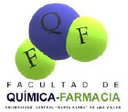Executive Secretary

VII Simposio Internacional de Química 2019
SIQ 2019
The elucidation of excitation mechanisms in Inductively coupled plasma optical emission spectrometry (ICP OES) can influence on the best performance of the analysis because it contributes to the understanding of the matrix effect (ME), one of the principal causes of deterioration of the analysis trueness. In addition, to know the origin of ME favors its correction. In this context, the Penning ionization/excitation by Argon metastable and non-metastable energy levels has been proposed as a possible route to transfer energy from Argon into analyte energy levels with total excitation energy (TEE) between 11.5 and 15 eV. In the present work, ME of the single matrices Ca, Na and Mg, and of combined matrix Fe + Mg + Ni matrix was studied as a function of TEE of analytes emission signals in the 8-20 eV range. Two ICP OES spectrometers with radial or axial plasma observation mode at non robust operating condition were used. A significant positive correlation between ME and TEE for Ca and Na matrices was observed, while, a significant negative correlation, but inverse was observed for single Mg and combined Fe + Mg + Ni with analytes signals in the 12 and 14 eV TEE interval. Besides, the analytes emission signals decrease only in the presence of Ca, which shows five ionic levels with energies between 12.58 and 13.63 eV. This signal emission decrease of analytes was not observed in the presence of Na. A detailed study of Argon spectra, reveals the existence of twenty-five non-metastable argon levels with energies between 12.91 and 14.26 eV. Therefore, it is theoretically possible, the transfer of energy from Argon into Ca, according to the following reaction: This way, a part of plasma energy is deviated to the excitation of Ca matrix atoms, which could explain the analytes emission signals decrease in this energy interval. The present hypothesis is discussed versus the hypothesis proposed previously to explain the decrease of emission signals of analytes in the presence of Ca.
The elucidation of excitation mechanisms in Inductively coupled plasma optical emission spectrometry (ICP OES) can influence on the best performance of the analysis because it contributes to the understanding of the matrix effect (ME), one of the principal causes of deterioration of the analysis trueness. In addition, to know the origin of ME favors its correction. In this context, the Penning ionization/excitation by Argon metastable and non-metastable energy levels has been proposed as a possible route to transfer energy from Argon into analyte energy levels with total excitation energy (TEE) between 11.5 and 15 eV. In the present work, ME of the single matrices Ca, Na and Mg, and of combined matrix Fe + Mg + Ni matrix was studied as a function of TEE of analytes emission signals in the 8-20 eV range. Two ICP OES spectrometers with radial or axial plasma observation mode at non robust operating condition were used. A significant positive correlation between ME and TEE for Ca and Na matrices was observed, while, a significant negative correlation, but inverse was observed for single Mg and combined Fe + Mg + Ni with analytes signals in the 12 and 14 eV TEE interval. Besides, the analytes emission signals decrease only in the presence of Ca, which shows five ionic levels with energies between 12.58 and 13.63 eV. This signal emission decrease of analytes was not observed in the presence of Na. A detailed study of Argon spectra, reveals the existence of twenty-five non-metastable argon levels with energies between 12.91 and 14.26 eV. Therefore, it is theoretically possible, the transfer of energy from Argon into Ca, according to the following reaction: This way, a part of plasma energy is deviated to the excitation of Ca matrix atoms, which could explain the analytes emission signals decrease in this energy interval. The present hypothesis is discussed versus the hypothesis proposed previously to explain the decrease of emission signals of analytes in the presence of Ca.
Sobre el ponente

Dr. Elizabet Abad






